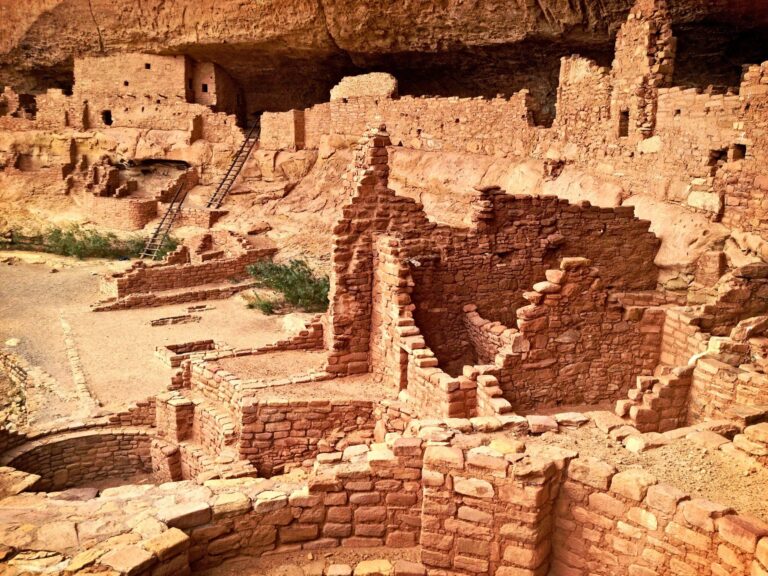Archaeologists have uncovered a remarkable 5,000-year-old tomb in southern Spain, shedding new light on prehistoric life in the region. The discovery, announced this week, offers an unprecedented glimpse into ancient burial practices and rituals during the Neolithic period. Excavated near the historic town of Antequera, the tomb contains a wealth of artifacts and human remains that promise to deepen our understanding of early Iberian societies. This significant find, reported by Smithsonian Magazine, marks a major breakthrough in the study of European prehistory.
Archaeologists Uncover Ancient Tomb in Southern Spain Offering New Insights into Early Civilizations
In a remarkable breakthrough, a team of archaeologists has uncovered a 5,000-year-old tomb nestled within the rugged landscapes of southern Spain. This discovery sheds unprecedented light on the burial practices and social structures of early civilizations in the Iberian Peninsula. Excavations revealed intricately carved stone slabs and well-preserved artifacts, suggesting the tomb served as a resting place for a high-ranking individual, possibly a chieftain or religious figure. Notably, the assemblage of pottery, tools, and ornamental objects points to a sophisticated cultural exchange network predating known historical records in the region.
The excavation site has already contributed valuable data challenging prior assumptions about prehistoric life in southern Europe. Among the key findings:
- Complex funerary rituals: Evidence of ritualistic offerings hints at spiritual beliefs much earlier than anticipated.
- Trade networks: Exotic materials like marine shells and copper artifacts suggest long-distance connections.
- Social hierarchy: The design of the tomb indicates a stratified society with specialized roles.
A comparative table released by the research team highlights the unique elements of this tomb in relation to other contemporary sites in Europe.
| Feature | Southern Spain Tomb | Typical European Site |
|---|---|---|
| Age (years) | 5,000 | 4,000 – 4,500 |
| Funerary Artifacts | Pottery, Copper Tools, Shells | Stone Tools, Basic Pottery |
| Social Structure | Hierarchical with Elite Burial | More Egalitarian |
Artifacts Reveal Burial Practices and Social Hierarchies of 5,000-Year-Old Community
Excavations at the site have unearthed a variety of artifacts that shed light on the intricate burial customs of this ancient community. Among the findings are elaborately decorated pottery, finely crafted tools, and ornamental jewelry made from rare stones and metals. These goods were carefully arranged within the tomb, suggesting a ritualistic approach to honoring the deceased. The presence of both utilitarian and decorative items indicates a belief system that valued both practicality and status in the afterlife.
Analysis of the tomb’s layout and grave goods reveals distinct social stratification within the group. Individuals interred with more luxurious objects appear to have held higher social rank, while simpler burials likely belonged to common members of the society.
Key artifacts include:
- Intricately engraved flint blades
- Gold and amber beads
- Ceramic vessels with symbolic motifs
To better illustrate the distribution of artifacts, the table below summarizes the types of items found according to burial zones:
| Burial Zone | Artifact Type | Estimated Rank |
|---|---|---|
| Central Chamber | Gold jewelry, ceremonial blades | Elite |
| Outer Vaults | Pottery, simple tools | Commoners |
| Peripheral Niches | Amber beads, stone ornaments | Artisans |
Experts Recommend Enhanced Preservation Efforts to Protect Newly Discovered Archaeological Site
Archaeologists and conservationists alike emphasize the urgent need to implement robust preservation protocols following the discovery of the 5,000-year-old tomb. The site, rich with intact artifacts and fragile burial chambers, faces threats from environmental exposure and potential human interference. Experts recommend immediate protective measures such as controlled access, stabilization of the structural remains, and environmental monitoring to prevent deterioration. These steps aim to safeguard the site’s invaluable cultural heritage for future research and public education.
Recommended Preservation Actions Include:
- Installation of protective coverings to shield the tomb from weather damage
- Deployment of 24/7 surveillance to deter vandalism and unauthorized excavations
- Regular archaeological site assessments to monitor condition and guide conservation efforts
- Community engagement programs to raise awareness and foster local stewardship of the site
| Conservation Task | Priority Level | Expected Timeline |
|---|---|---|
| Structural Reinforcement | High | 3 Months |
| Artifact Cataloging | Medium | 6 Months |
| Public Access Control | High | Immediate |
| Environmental Monitoring Setup | High | 1 Month |
Concluding Remarks
The discovery of the 5,000-year-old tomb in Southern Spain offers a remarkable glimpse into the region’s prehistoric past, shedding new light on ancient burial practices and social structures. As archaeologists continue to analyze the findings, this significant excavation promises to deepen our understanding of early human civilization on the Iberian Peninsula. Further research and preservation efforts will be crucial in unlocking the full story behind this extraordinary archaeological site.




